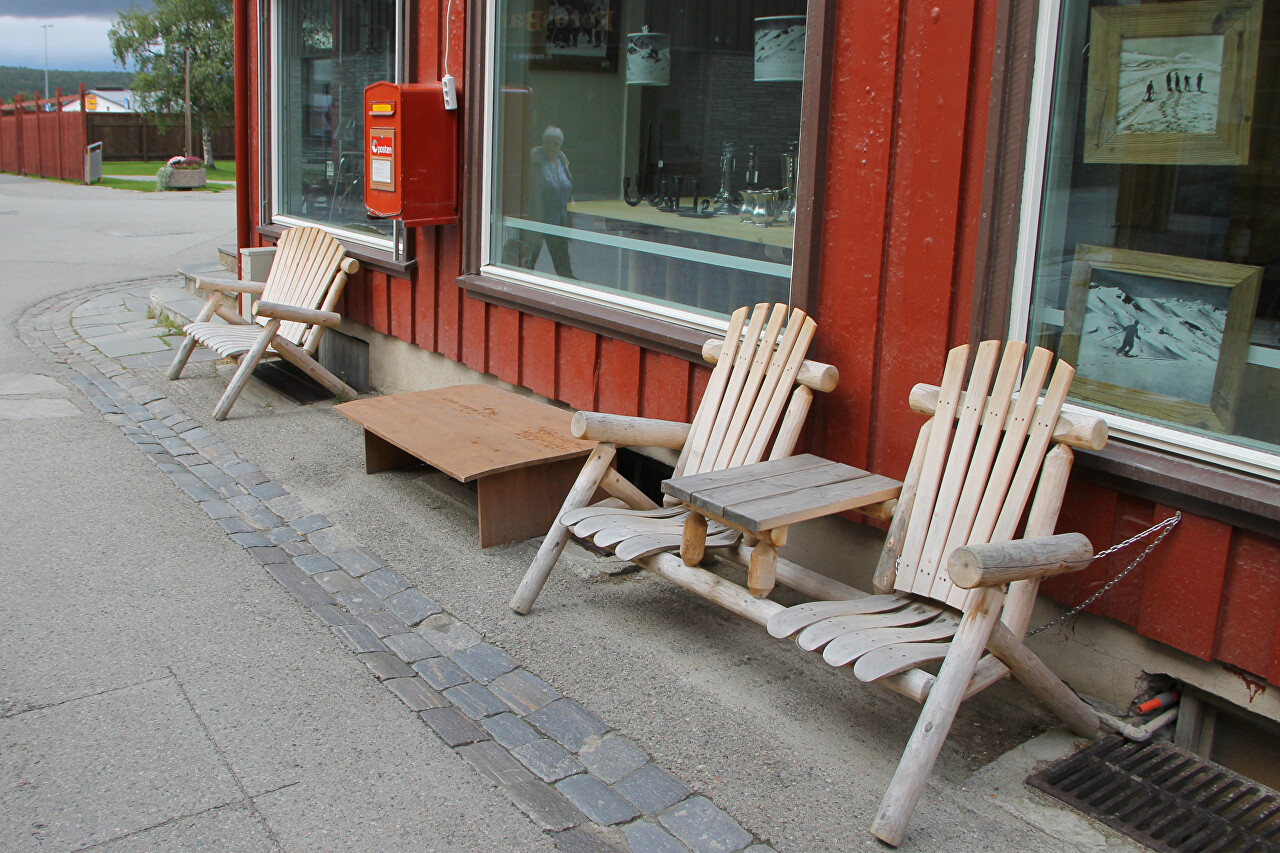Kjerkgata, Main Street of Røros
We will walk along the main street of the town. It is called Kjerkgata, which means "the street where the church is located".
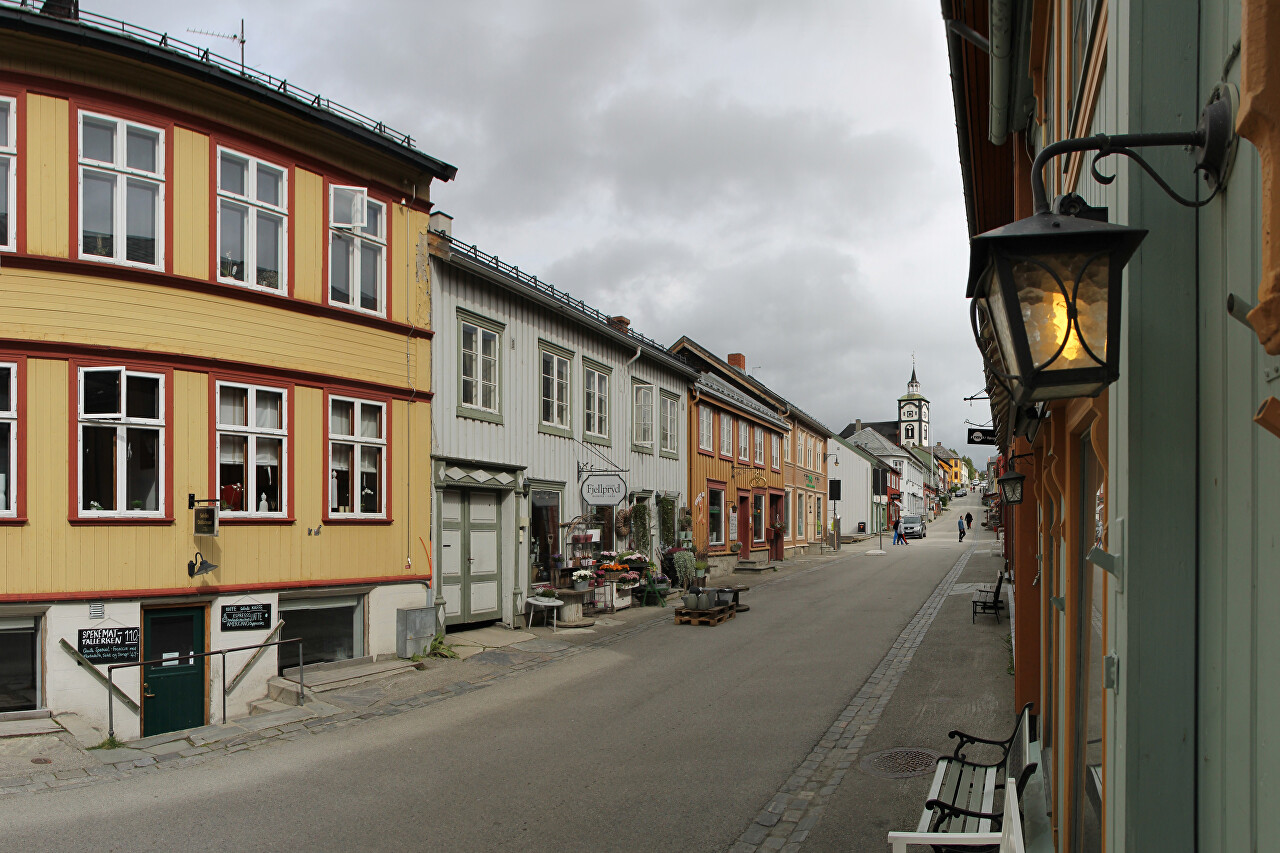
The first house from the Bergstadens Ziir church was built in 1695, owned by the farmer, merchant and organist of the сhurch Volqvart Jøns and has his name, Volqvartzgården.
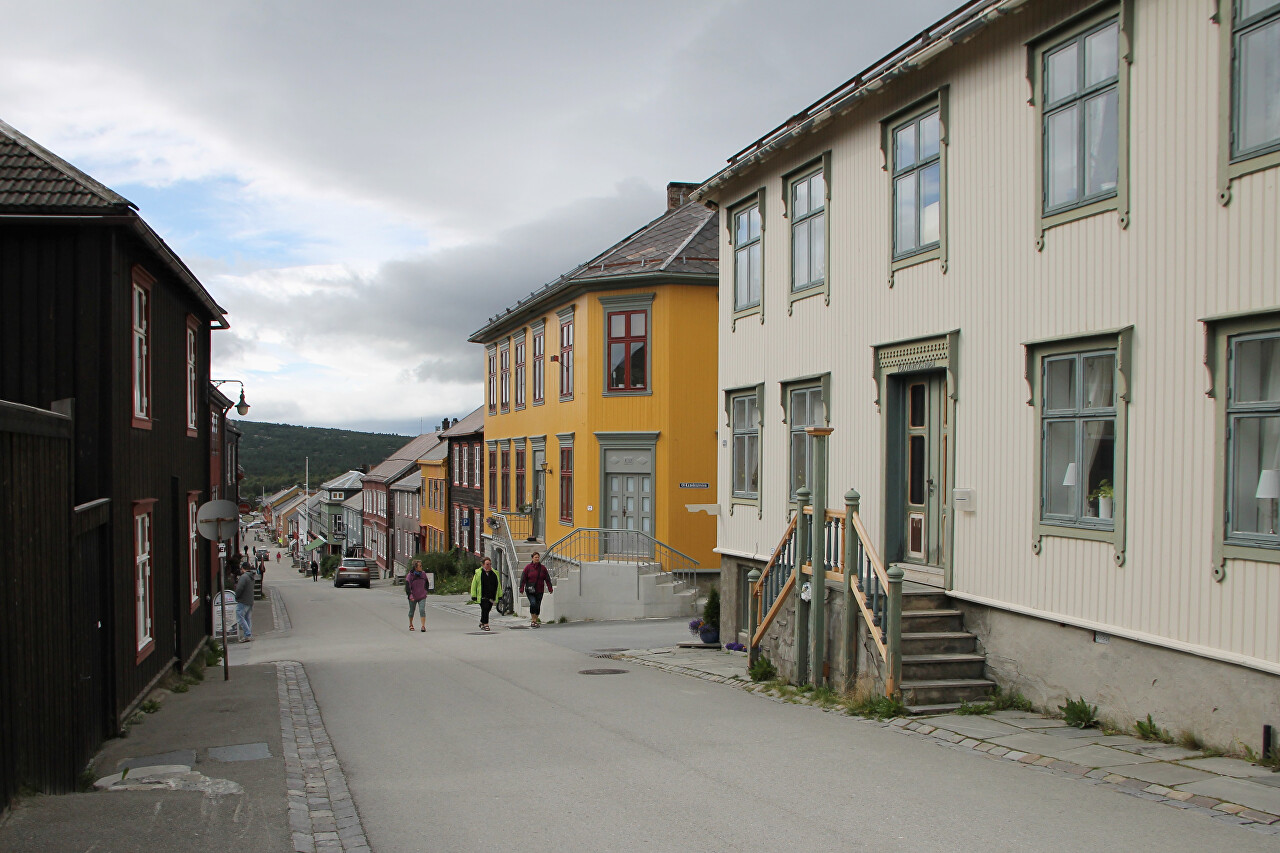
House No.38 belonged to the mountain master Knob (or Knoph), German in origin, and therefore received the name Tyskgården, which translates as "German house". In 1906, the house was bought by the butcher W. Asplin, who organized a slaughterhouse here. In 19015, the house was settled by the artist Evald Richard O.Strøm, and in 1926 the owner was Ola J. Stensaas, the first car owner and taxi driver in the Rerus.
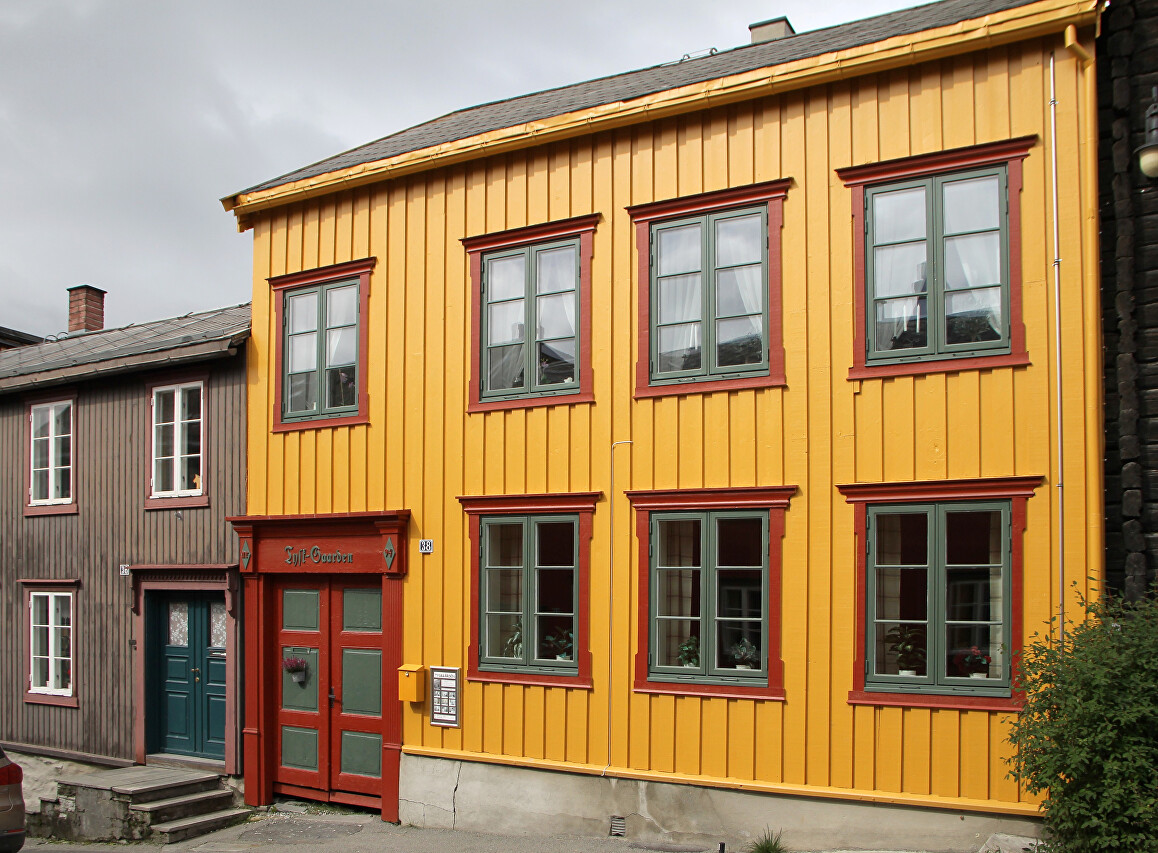
House number 92 in 1689, was built by Albert Lorentzen Angell, a merchant from Trondheim, he used it as a commercial warehouse. Then the building was bought by traders brothers Ramm, Andreas Berg and Johan Nataniel, since then, it bears the name Rammgården. Now the restaurant and pub in the old style are in this house. next gray house number 91, Kjelsberggården, here lived the city Sheriff and border inspector Ole Christofersen Kjelsberg. The official was also a Trustee of the local savings Bank and kept his deposits in his own basement, he believed it more reliable than in a bank safe. On the right we see the gate and part of the house 93, Langknut-gården, one of the oldest in Røros, it was built in 1660. Its owner, Longcot, had many horses and carts were used to transport ore from the mine to the smelting factory. In 1962, the house was badly damaged by fire, but was restored.
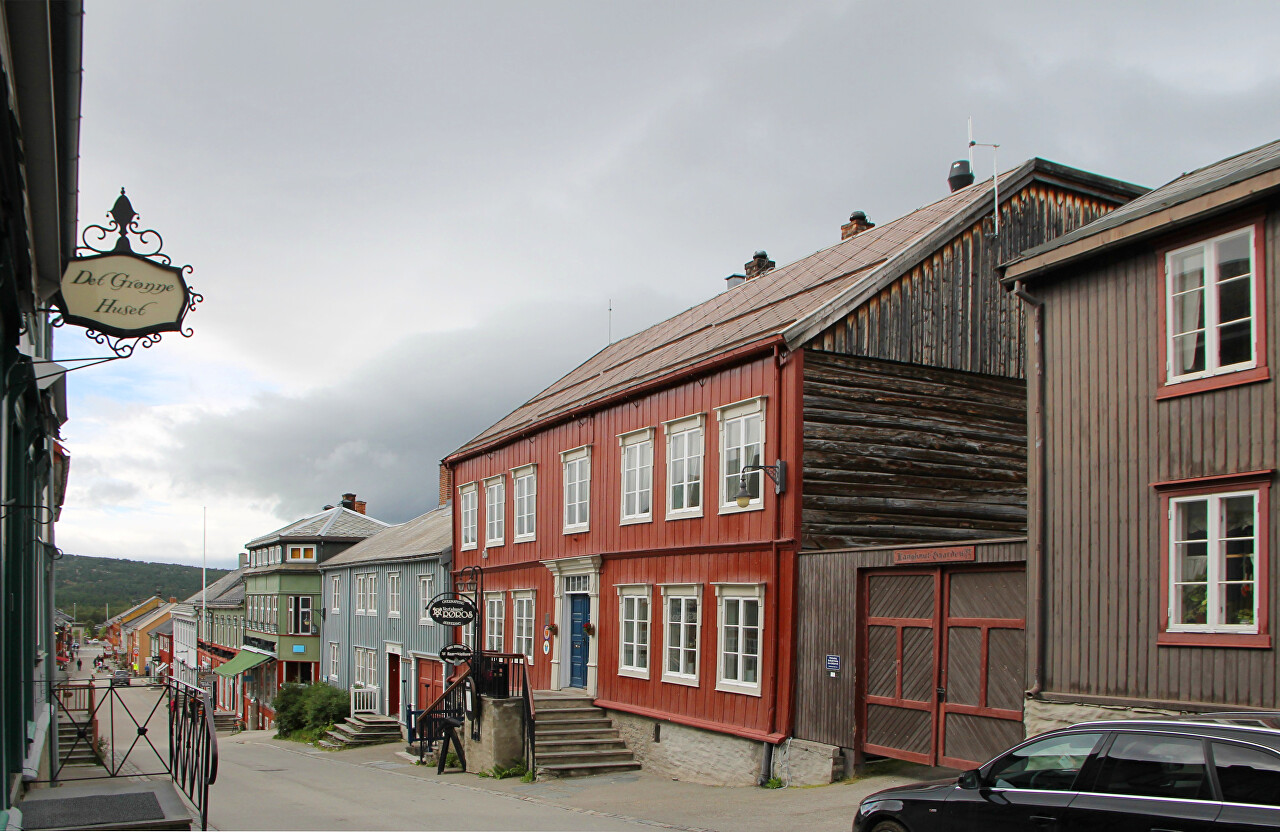
Skanckegården, here in 1874 Lars Pettersen Skancke founded the forge, which now make wrought iron ornaments, using traditional techniques. this house built in 1648 Pedersen Skancke, he had the origin of the Royal dynasty of the Isle of Man, according to historians.
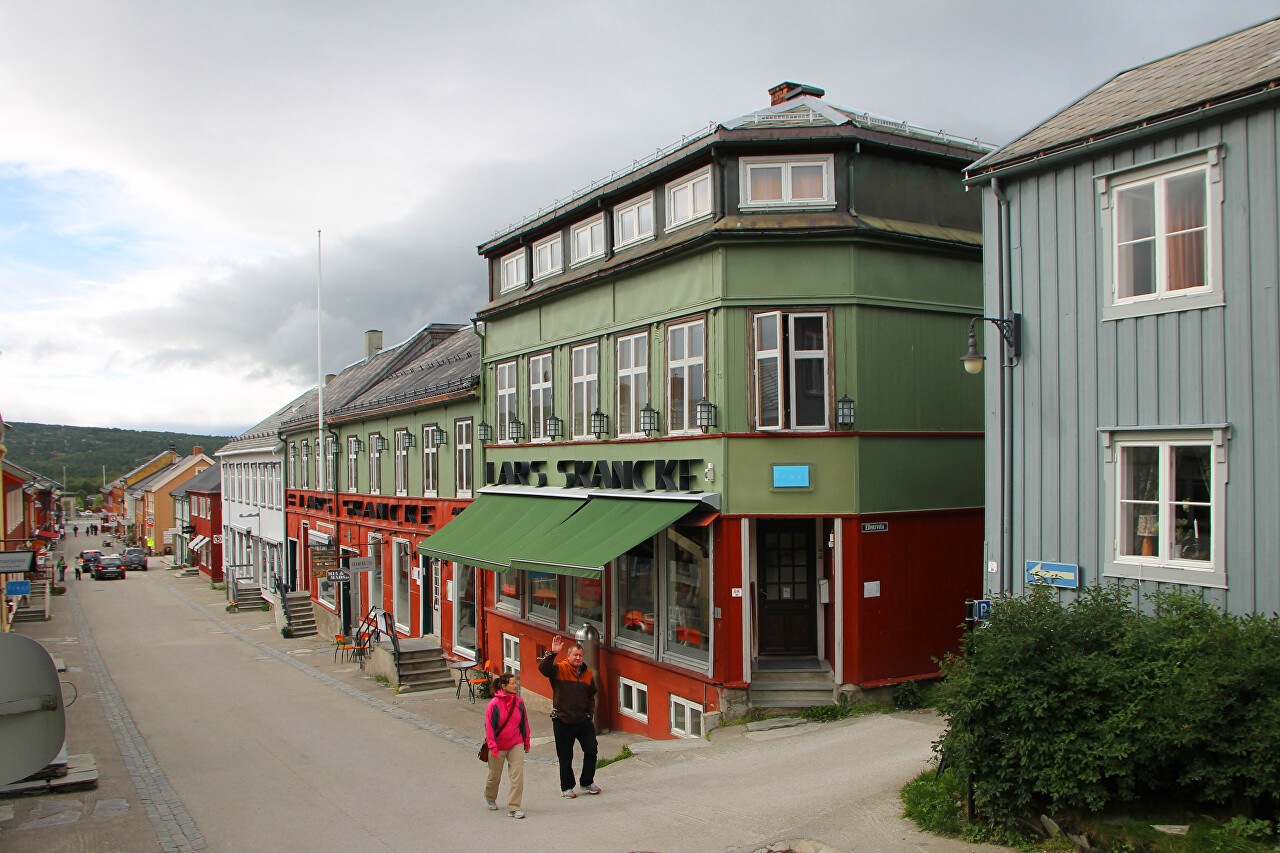
Not only Norwegians worked at the mine, but also migrants from Sweden, Denmark, Germany, as a result of which there was a dialect characteristic only for Røros.
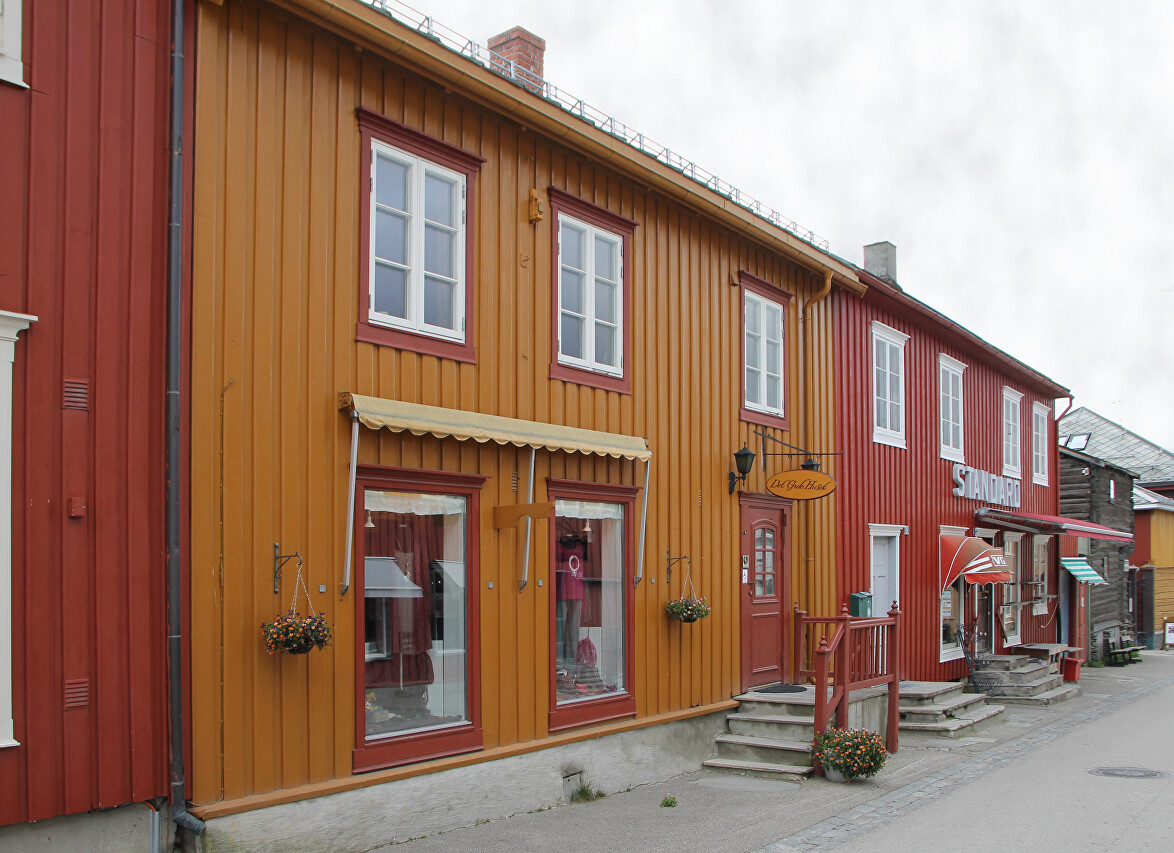
Old quarters of Røros are separated by narrow alleyways.
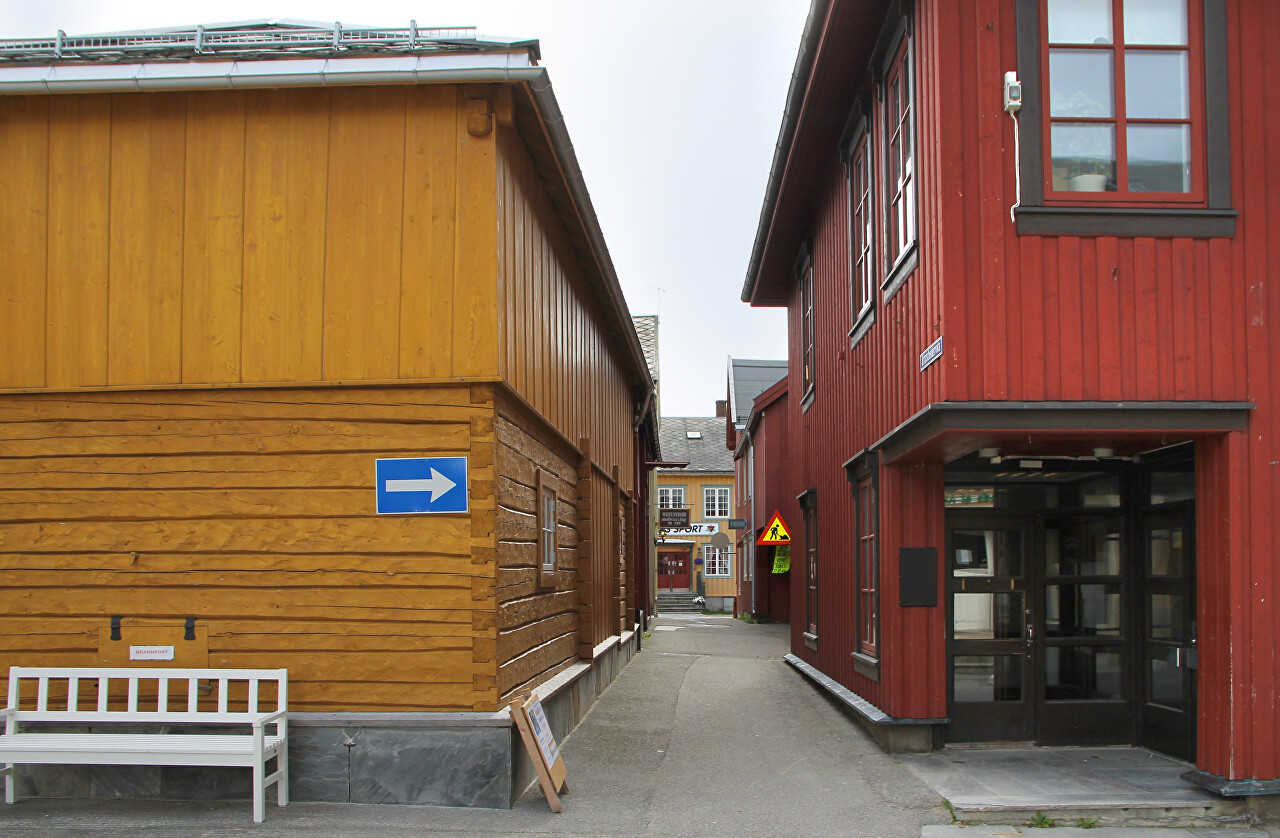
This side streets connect the two main streets - Kjerkgata and Bergmansgata ("street of miners").
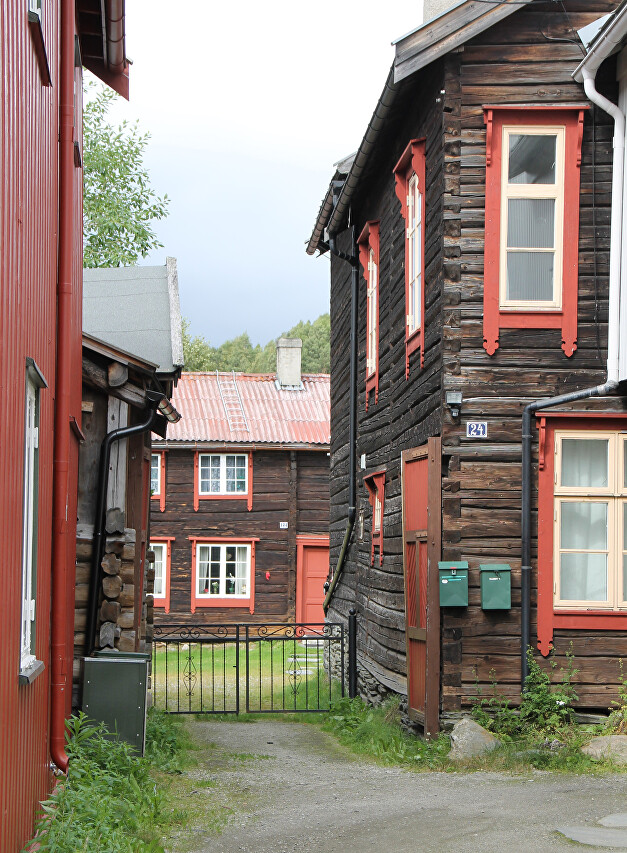
During the heyday of the mining company, the population of Røros exceeded 7 thousand people, now there are slightly less than four thousand inhabitants. The mine and the copper smelter have been closed for a long time, but now there are many small shops in the city.
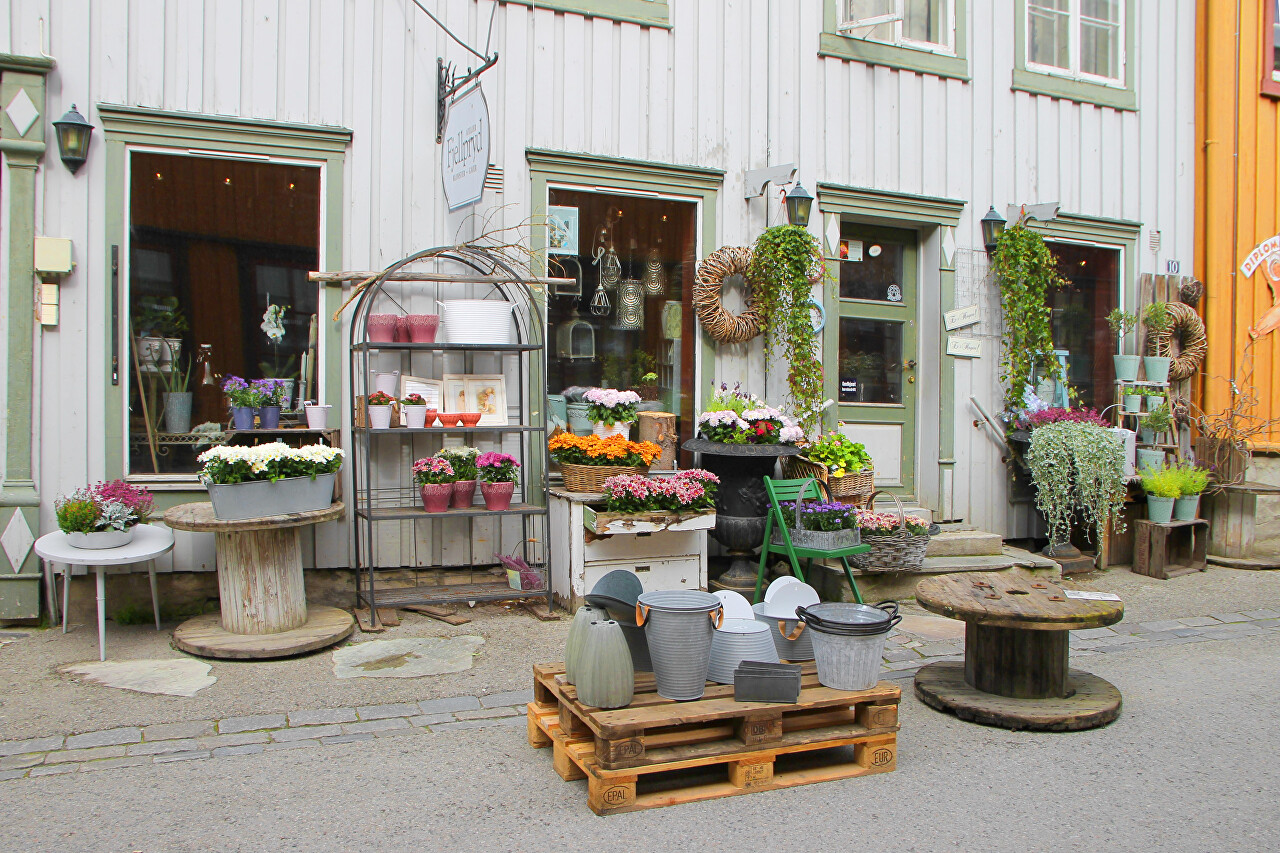
Despite its uniqueness and attractiveness for tourists, the main income of citizens gives work in the industry-surprisingly, this small town produces 350 types of products, from herbs to car electronics. Local cheeses and other milk products are well known in Norway.
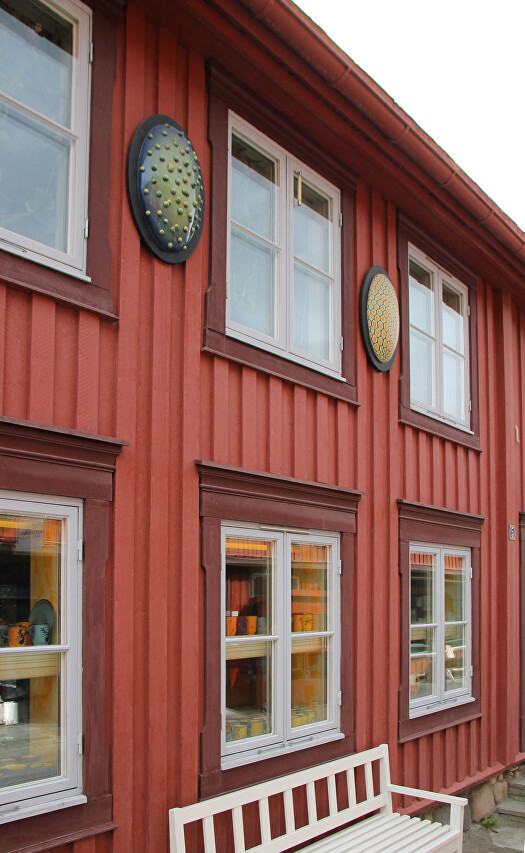
Røros is located just above 600 meters above sea level and is closed from the ocean by mountain ranges, so here is a subarctic climate. In the summer there is usually no higher than +20 Celsius, winter is also not too cold and is well suited for winter sports and recreation. But there are extreme frosts, in particular in 1914 there is an absolute record for Norway cold -50.3 degrees.
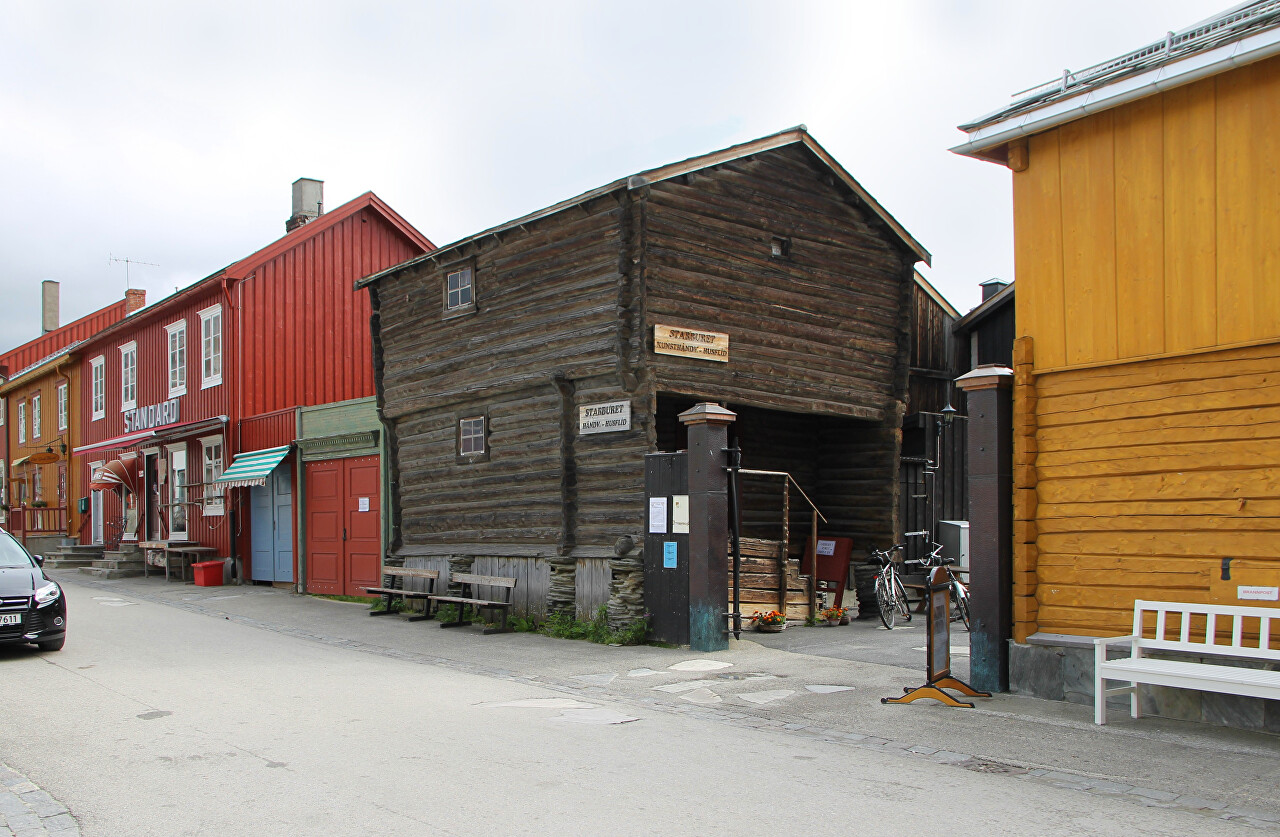
Highway N. 30, running through the valley of the river Geula, connects Røros with Trondheim, and going to east road N. 31 leads to Sweden. The city is located in the middle of the railway line Rørosbanen connecting Trondheim with the South-East of Norway. Fom the small airport there are regular flights to Oslo.
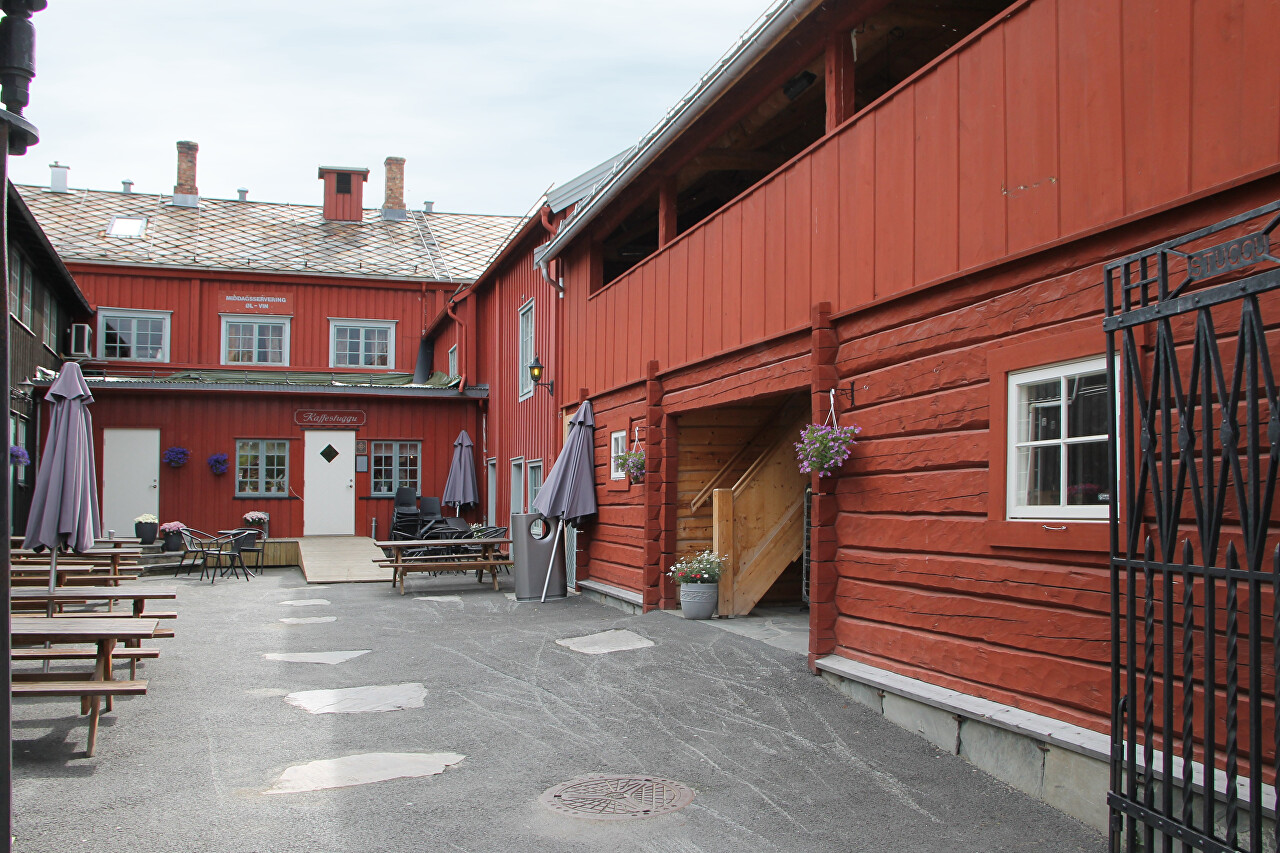
On the last Tuesday of February in the city held a fair called "Rørosmartnan". The event lasts for five days and attracts 60-70 thousand tourists.
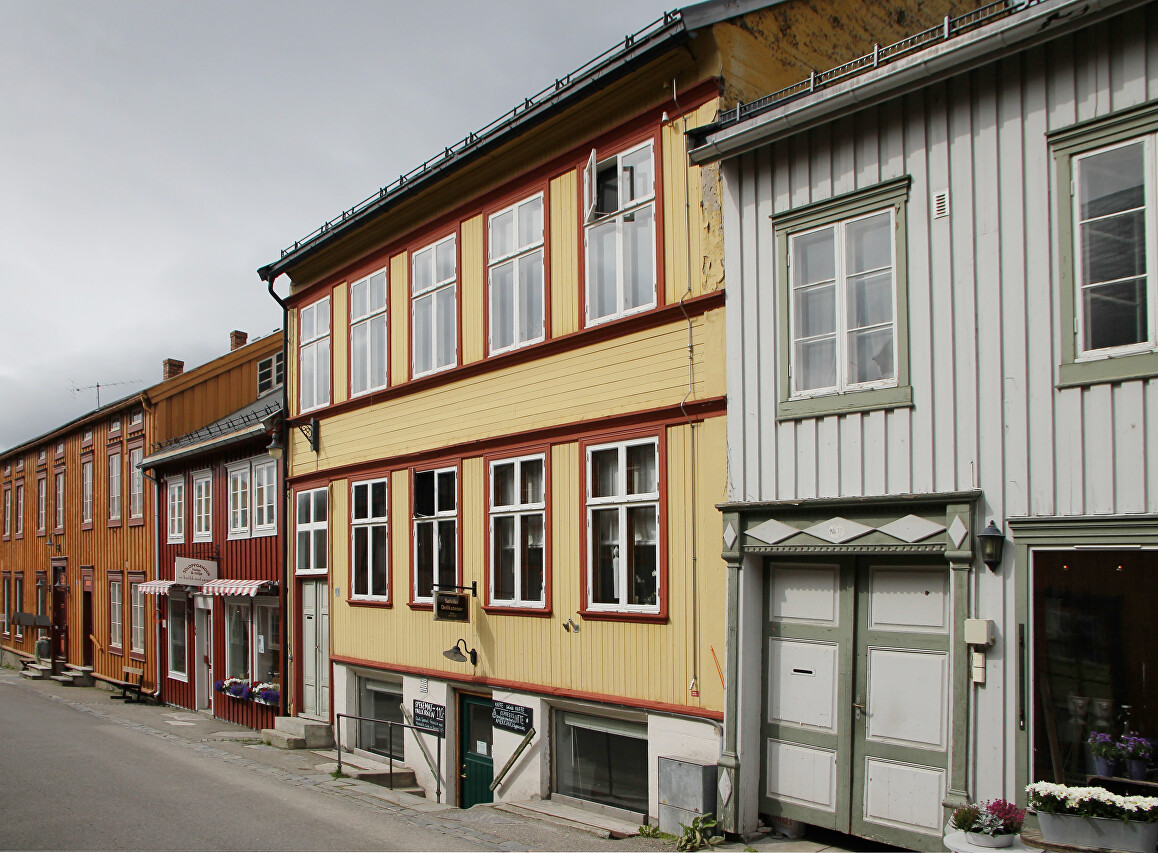
From 1994 in Røros is an annual theatrical and musical performance in the open air, devoted to the tragedy in 1718, when more than three thousand Swedish Swedish soldiers died from the cold. In 2011, the world championship in dog sled racing was held in Røros.
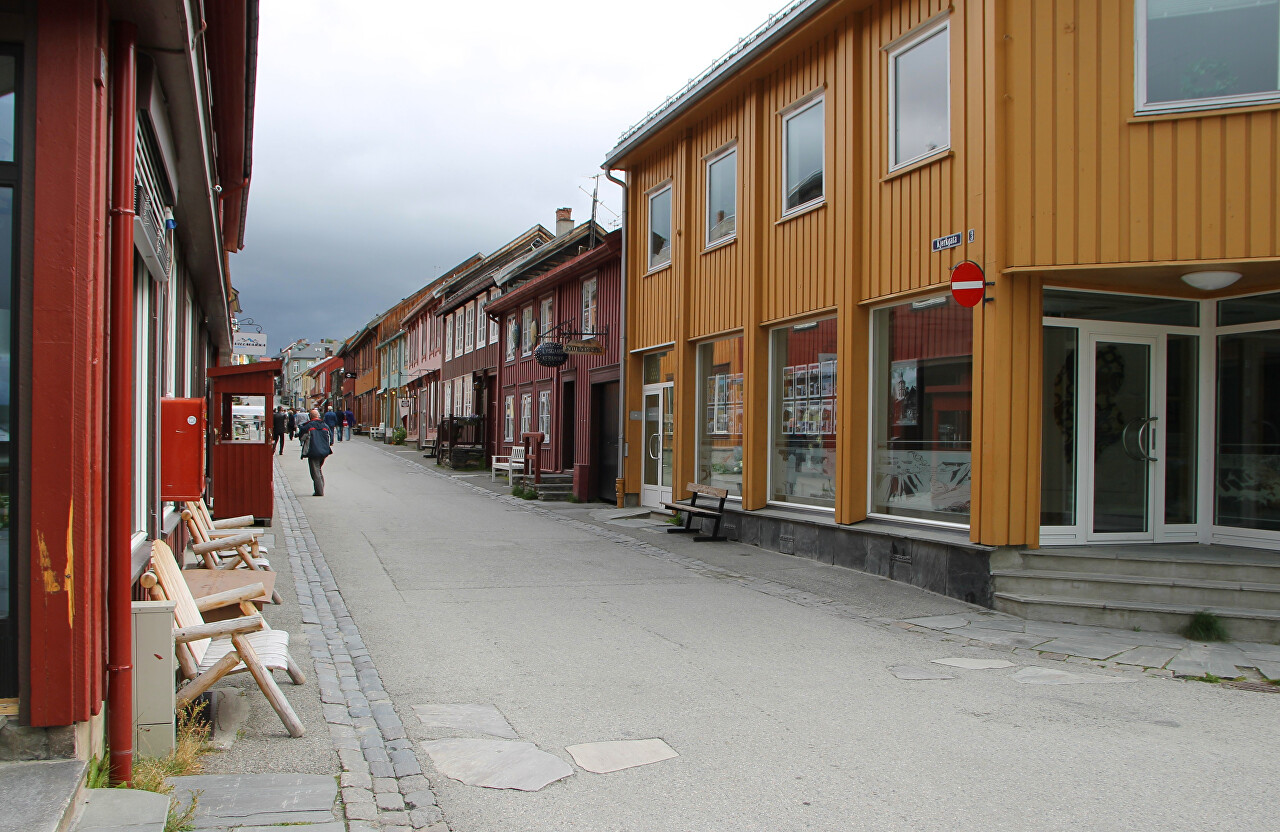
In the first house on the street Kjerkgata post office is located.
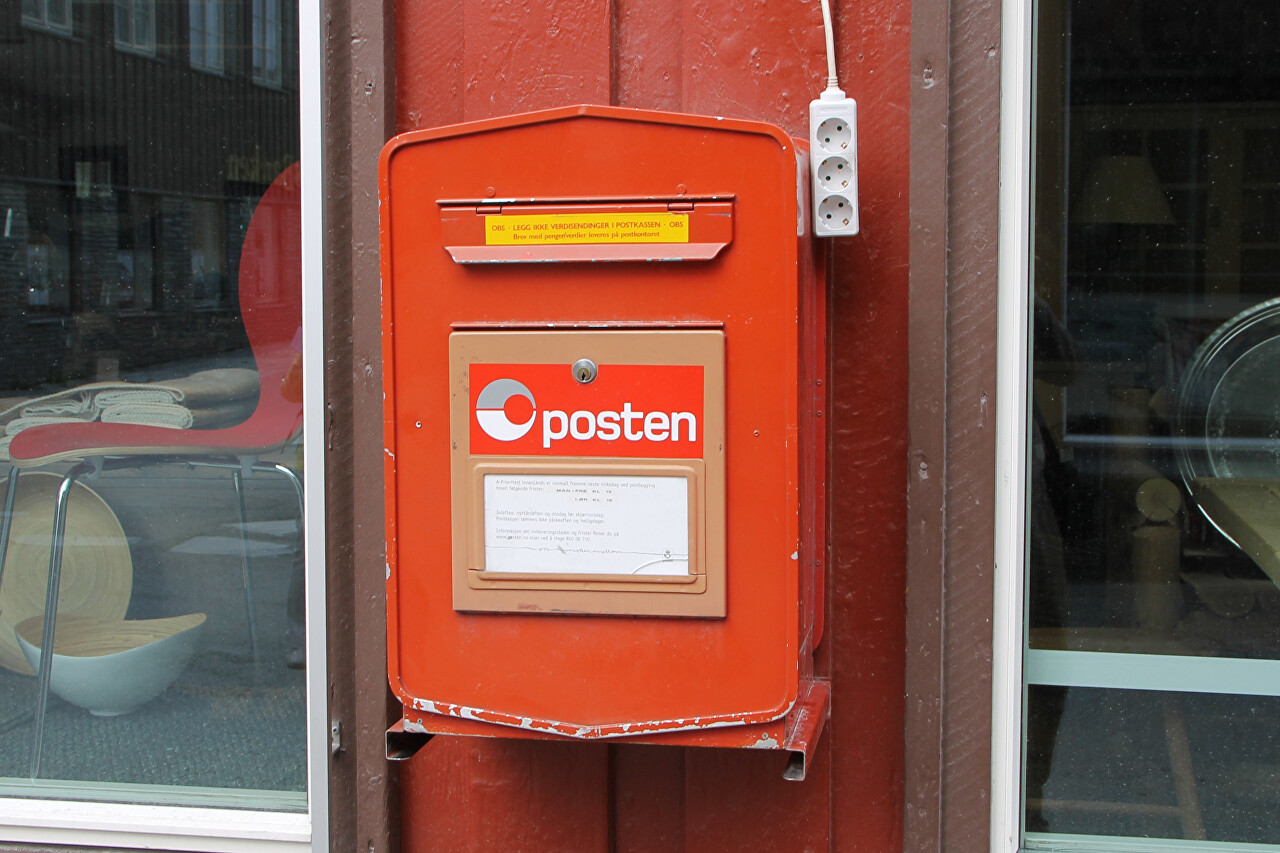
Here you can rest in the cozy wooden street chairs.
